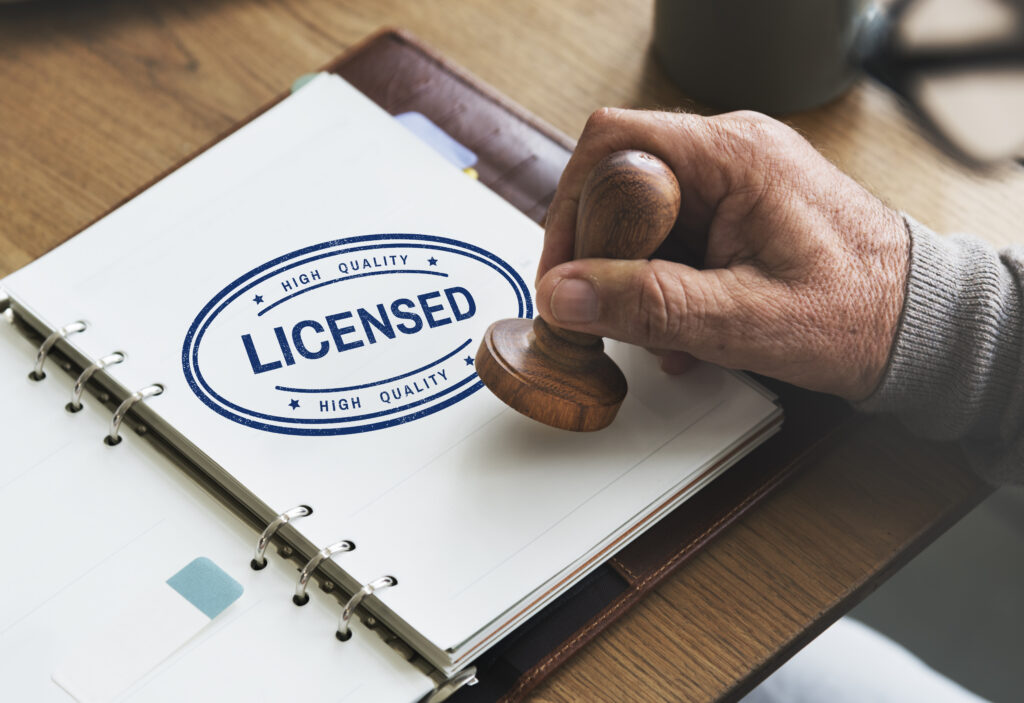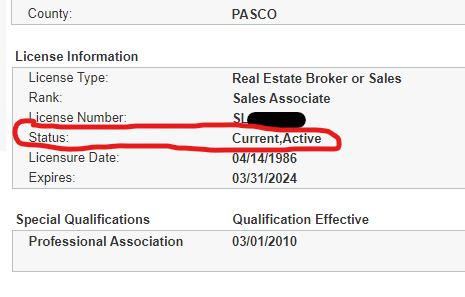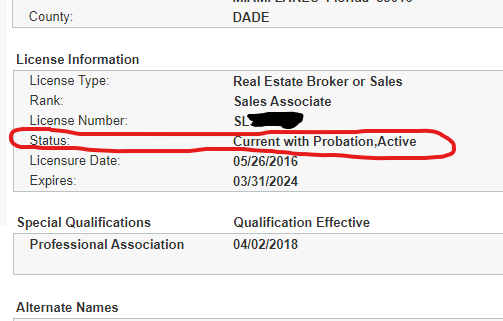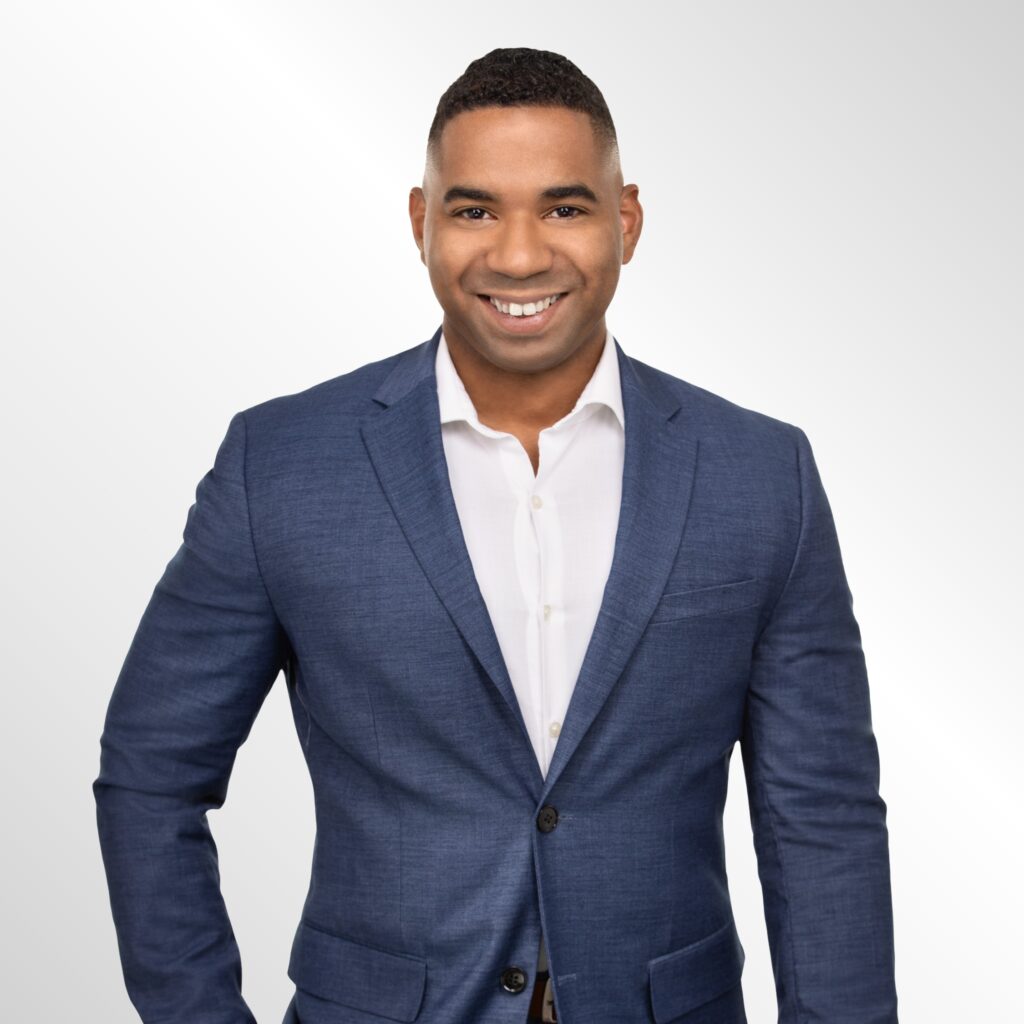
The Florida Real Estate License Status is mainly described with two sets of terms. One being the primary status, and the other one the secondary status. Understanding the different combination of these two set of terms is very important. In this article we outline the different combination. That way you will know what they mean.
You can check the status of any license by visiting the Licensing Portal – License Search (myfloridalicense.com). Below is how to understand what you find for the status.
As I mentioned in the beginning, the Florida Real Estate License Status has two terms: A primary and a secondary separated by coma as shown in the samples below. The primary status refers to the compliance status of the license holder with the requirements of the Department of Business and Regulation (DBPR), while the secondary status states if the license holder is allowed to operate.


The primary status refers to the compliance status of the license holder with the requirements of the Department of Business and Regulation (DBPR). The primary status are as follow:
Current means the licensee holder is up do date with the required education, licensing renewal fees and other requirements by the DBPR. Probation means the licensee holder is in a probation status to comply with disciplinary actions. Suspended, means the license has been suspended and not able to operate.
The Current and Probation status are the only two primary statues that allow a licensee holder to be employed and/or compensated by an Active Broker.
The secondary status indicates if the license holder is allowed to operate. The two options are as follows:
Active means the license holder is employed under an active broker and able to perform real estate service and to receive compensation. An Active status is required to engage in real estate services and/or receive compensation. To become an independent broker (not employed under another broker) and have active status, there are different requirements not covered on this article.
Inactive means the license holder is not employed under an active broker and not performing (or able to perform) real estate services. This can be by choice, and there fore there are two types of inactive status:
Voluntary Inactive: This is for license holders who meet all the qualifications, but chooses not to engages in the real estate business for a period of time. This person submits a request to place his/her license in voluntary inactive status with the DBPR. This status would show as “current,inactive.”
Involuntary Inactive. This happens when a licensee fails to renew an active or voluntary inactive license before the expiration date after the first renewal. This licensee has two years to complete the required continuing education and renew the license to either active of voluntary inactive. If a license doesn’t complete these requirements for renewal within two years of bein involuntary inactive, the license automatically expires and becomes null and void. In this case the person would need to start the licensing process from scratch.
Here are some helpful links:

Real Estate Broker, Instructor and Founder of the Your Home Plus Companies with the vision of positively transforming the real estate industry so that the consumer have more trust and loyalty in real estate professionals and that real estate professionals have a higher success rate in the industry.